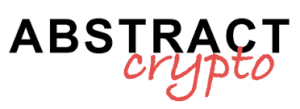The crisis at First Republic Bank now appears to have been resolved.
In fact, after taking possession of the bank, the FDIC (Federal Deposit Insurance Corporation) reached an agreement to sell most of its assets to JPMorgan Chase & Co.
As a result, JPMorgan will take over all of First Republic Bank’s $103.9 billion in deposits and most of its $229.1 billion in assets.
Technically, however, this is a kind of quick bankruptcy, as the bank has been deemed insolvent and effectively seized by the FDIC.
According to the Wall Street Journal, this would be the second largest bank failure in US history, larger even than that of Silicon Valley Bank in March.
It should be noted that First Republic Bank’s stock on the New York Stock Exchange has lost more than 97% of its value since the beginning of March, with -88% in March followed by a further -80% last week.
First Republic Bank: the end of the banking crisis
The performance of the S&P500 index over the past ten days suggests that the situation is now returning to some sort of normalcy.
Since the day of the latest First Republic Bank collapse, Monday 24th April, the S&P500 first lost 2% in two days and then rebounded by almost 3% in the following days, taking it back to levels above those of 23rd April.
The index is now close to the highs for the year reached in early February.
Moreover, US President Joe Biden himself said that they were on the way to stabilising the banking system after the incredible series of major failures that may have ended in recent days with the collapse of First Republic Bank.
Moreover, while the previous major failures of Silicon Valley Bank and Signature Bank did not end with the transfer of assets to other banks, that of First Republic Bank seems destined to end in record time, thanks to JPMorgan’s intervention and, above all, the Fed‘s backing of all customer deposits.
And so, according to some analysts, this latest collapse could mark the end of the US banking crisis in 2023.
May 3rd: What will happen?
Tomorrow could still be a day of high volatility in the financial markets.
The Fed is due to announce its decision on whether to raise interest rates further.
In fact, markets have largely discounted a 25 basis point hike, but that does not seem to be the critical issue.
Market projections suggest that the expectation is for a couple of 25 basis point cuts through the end of 2023, particularly at the end of the year. It is possible that the markets are already discounting this assumption as well.
After the announcement of the rate decision, the Fed will hold a press conference where words could be spoken that would significantly increase market volatility.
In other words, while the announcement of the 25-point rate hike may not generate much volatility, the words spoken at the press conference that follows may, especially if they somehow, fully or partially, dismantle the hypothesis of a double-dip by year-end.
If, instead, the Fed announces tomorrow that it has not raised rates, the markets could react immediately, and probably well.
Market fear
The reason the markets think a double rate cut is possible by the end of the year is that such high rates could fuel a recession.
Remember that the current level of interest rates in the U.S. is the highest it has been in decades, and the long-term impact on the country’s economy could be devastating.
Given that inflation is coming down significantly, and given that the Fed may well decide not to bring it back below 2% as early as the end of the year, it actually seems logical to imagine that in order to reduce the risk of a recession, they may decide to lower it a bit in the fall.
The truth is that the hypothesis of a recession is widely shared, but there is a growing conviction that it could also be a mild recession.
It is possible that this is now the crucial point at which investors and speculators start to adjust their financial strategies, and in such a context the end of the banking crisis could be the best case scenario.
If the Fed somehow supports this logic, or gives the appearance of supporting it, then the market reaction could also be positive.


